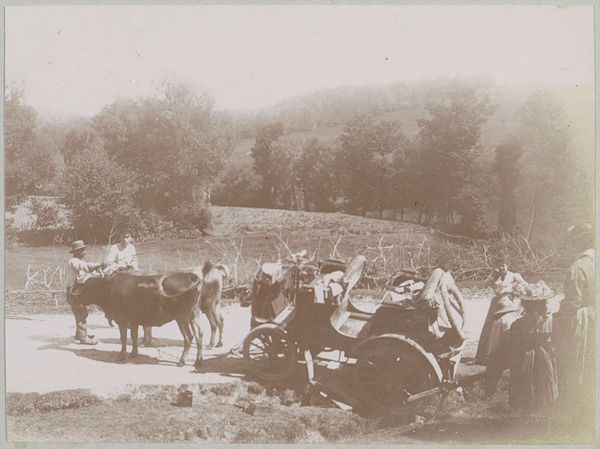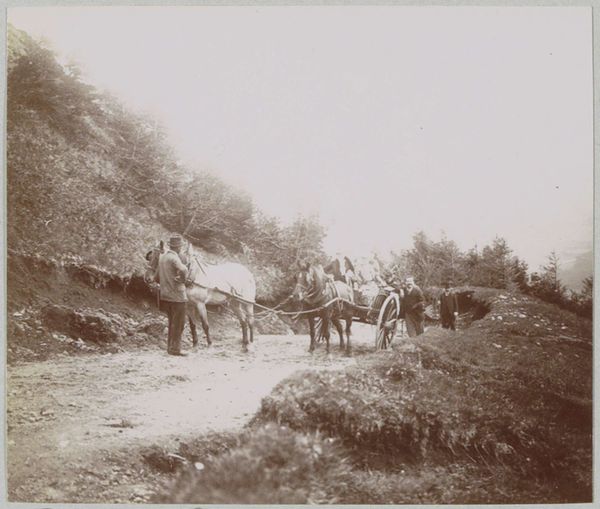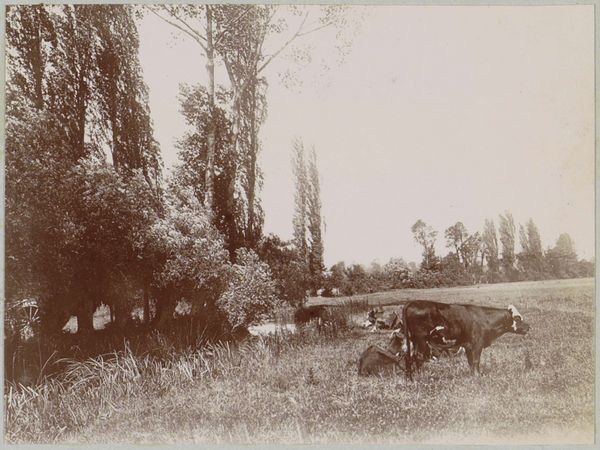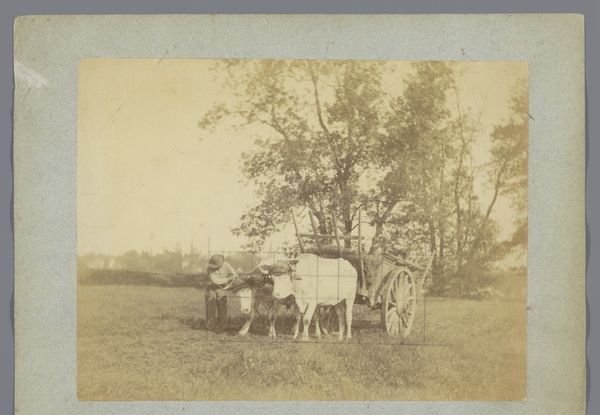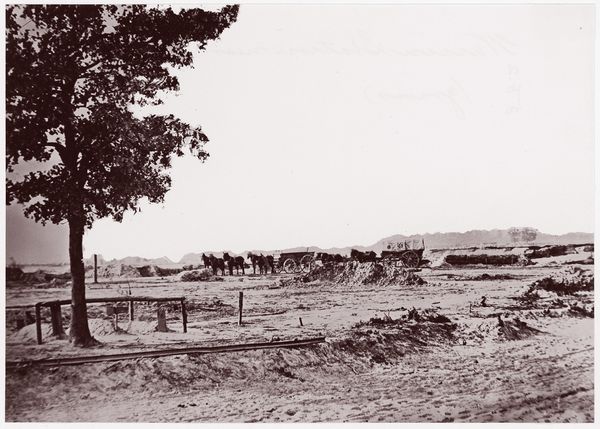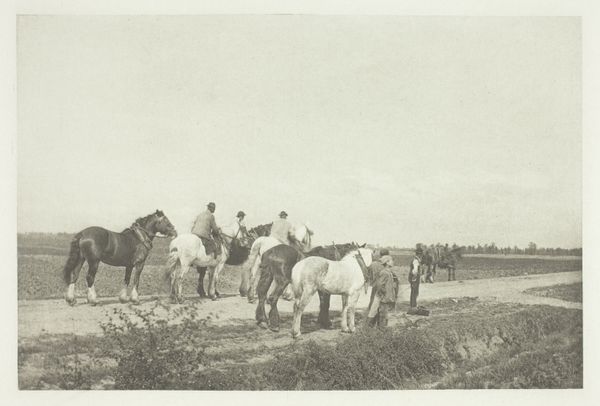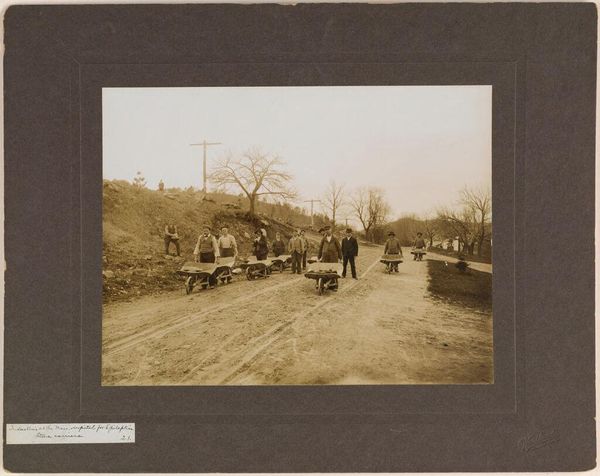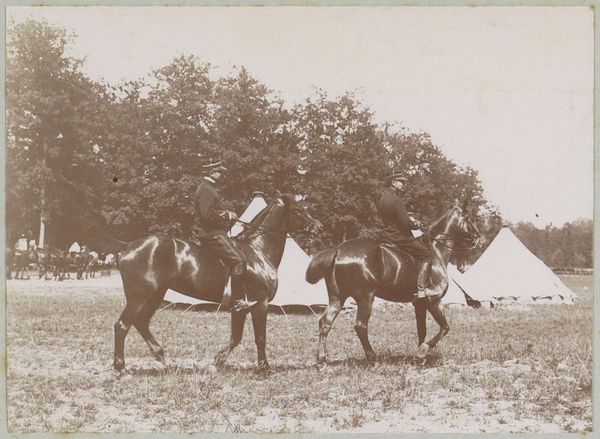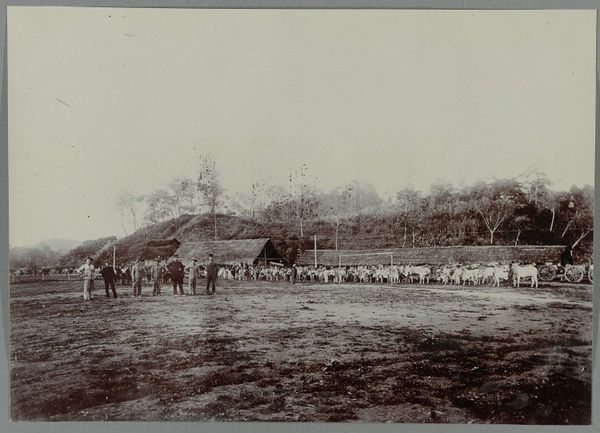
plein-air, photography
#
plein-air
#
landscape
#
photography
#
realism
Dimensions: height 110 mm, width 160 mm
Copyright: Rijks Museum: Open Domain
Curator: What strikes me first about this photograph is its incredibly muted palette. It's as if the whole scene is filtered through a sepia dream. Editor: I agree, it gives it a very serene feeling. The Rijksmuseum houses this interesting piece entitled, "Paarden en wagens in een legerkamp te Fontainebleau," translating to "Horses and wagons in an army camp at Fontainebleau". It was captured in 1896. It's interesting that even military scenes could be presented with such calm. Curator: The way the light interacts with the trees in the background certainly creates that mood. But look closer at how the camp is presented, how these draft horses would have been seen. To have that recorded on photographic paper, not painted... photography really begins to inform how power operates in the 19th century, and whose image is presented to the masses, doesn't it? Editor: Absolutely. Photography was emerging at that time, and a growing interest in what some now describe as "Plein-air" style really makes this piece remarkable in its material process. The light is rendered by the camera, the depth of focus showing that not just any photograph would give this result. This also begs questions about what we do with photography today versus the deliberate labour involved here. Curator: Indeed, consider the institutional frameworks that supported the technology of photography during the time. What societal purpose did photographs such as these serve? It shows both an accurate representation of a French military practice, but does so within a certain aesthetic vision. Editor: Yes. I would go back to labour; this photographer lugged the equipment necessary for what they needed to capture at Fontainebleau, which wasn't exactly simple! And then think of the cost of photographic material relative to disposable cameras available much later! These processes speak of a value of this documentation, of that kind of labour and making which shifts the needle for "art." Curator: It brings such weight to thinking about the political implications. And I see that even in what looks like an exercise, there's history being made, recorded and later viewed. Editor: Indeed, such labor! And now it leads to a deeper reading than what I'd perceived at first glance.
Comments
No comments
Be the first to comment and join the conversation on the ultimate creative platform.
